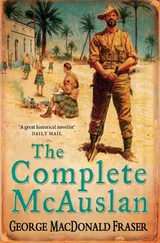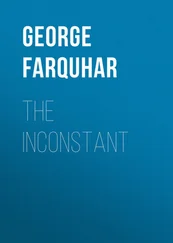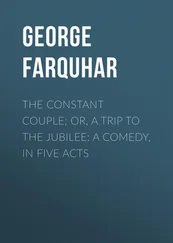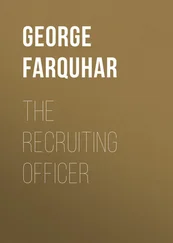George Fraser - The Steel Bonnets
Здесь есть возможность читать онлайн «George Fraser - The Steel Bonnets» — ознакомительный отрывок электронной книги совершенно бесплатно, а после прочтения отрывка купить полную версию. В некоторых случаях можно слушать аудио, скачать через торрент в формате fb2 и присутствует краткое содержание. Жанр: unrecognised, на английском языке. Описание произведения, (предисловие) а так же отзывы посетителей доступны на портале библиотеки ЛибКат.
- Название:The Steel Bonnets
- Автор:
- Жанр:
- Год:неизвестен
- ISBN:нет данных
- Рейтинг книги:4 / 5. Голосов: 1
-
Избранное:Добавить в избранное
- Отзывы:
-
Ваша оценка:
- 80
- 1
- 2
- 3
- 4
- 5
The Steel Bonnets: краткое содержание, описание и аннотация
Предлагаем к чтению аннотацию, описание, краткое содержание или предисловие (зависит от того, что написал сам автор книги «The Steel Bonnets»). Если вы не нашли необходимую информацию о книге — напишите в комментариях, мы постараемся отыскать её.
The Steel Bonnets — читать онлайн ознакомительный отрывок
Ниже представлен текст книги, разбитый по страницам. Система сохранения места последней прочитанной страницы, позволяет с удобством читать онлайн бесплатно книгу «The Steel Bonnets», без необходимости каждый раз заново искать на чём Вы остановились. Поставьте закладку, и сможете в любой момент перейти на страницу, на которой закончили чтение.
Интервал:
Закладка:
The English and Scottish East Marches were the smallest of the six, though by no means less important than the others. They fronted each other exactly along the Borderline from near Carham on the Tweed to a point just north of Berwick, and if any stretch of the frontier could claim to have comparatively law-abiding inhabitants, it was this. Left to themselves, they might have been quiet enough, but they were never left; the good farm lands towards the coast attracted severe raiding from the Middle Marches, and there were no natural mountain defences, but only “plain champian countrey”; the river Tweed was very easily fordable.
In war-time the East Marches suffered particularly badly, for through them came most of the English and Scottish armies, bringing ruin in their wake. It was the obvious route, for the coastal plain afforded the easiest passage and the best forage, and Edinburgh, Scotland’s capital, lay on the east, as did the important English bases at Berwick, Newcastle, and Alnwick. And unlike the fiercer tribes of the Middle and West Marches, the men of the east were less likely to make the invader’s passage uncomfortable.
Being small, the Eastern Marches were easier to control. On the Scottish side the Hume family reigned almost unchallenged, locally at least, and Hume Castle was an inland bastion against invasion. Around it lay the Merse, the fertile plain which was Scotland’s storehouse and even supplied the English East March with food: the garrison at Berwick depended entirely on the Merse for their supplies in peace-time, and as one of their commanders, John Carey, 1 put it, if Hume stopped the Merse farmers selling to Berwick, “we need no other siege”. It is significant that Carey, writing to Burghley 2 at a time when other Border officials had little good to say of their national opposites, spoke of the Merse Scots as “our good neighbours, who supply our markets with beef, mutton, veal, pork, and all kinds of pullyn (poultry), without which we could not live”.
1. One of the most striking monuments to imperial Rome still in existence, Hadrian’s Wall runs across the wasteland of middle Britain between Solway and Tyne. Although large portions of it have vanished, and what remains is considerably reduced from its original height, it is still the best preserved of the legions’ frontier fortifications. This view, looking westward from Housesteads, the central fortress on the Wall, shows clearly how the Roman engineers used the natural barriers of hillside and escarpment as a basis for their great rampart, the first and decisive division between north and south Britain.
2. Part of the massive fortifications of Berwick-on-Tweed, which the English government once regarded as the country’s most important garrison. Despite the imposing appearance of these works today, the records of Berwick in Elizabeth’s time are full of warnings of decay and disrepair, and urgent pleas from officials for the defences to be strengthened. Lord Willoughby, governor in the 1590s, thought Berwick was strong only in appearance, and observed: “Ther hath bene infinite cost bestowed, and nothinge parfytted.”
3. A few miles above Moffat, where the Edinburgh road runs into the lonely mountain country of the northern Borderland, the ground falls dramatically away into a great cleft among the hills. Although it lies a long way from the frontier line itself, on the very limit of the Scottish Marches, this is traditionally believed to have been a common hiding-place for stolen cattle—hence its name, the Devil’s Beef Tub.
4. Smailholm, not far from Kelso, was a Pringle stronghold, and is one of the finest examples of a Border tower. Built on a rocky outcrop, with the remains of an outer barnekin wall still to be seen round the western side, it commands a wide view and must have been unusually difficult to besiege. It has four floors, the lowest one vaulted, with the main apartments above, and is unusual in that it still has its roof and an iron grille over its main door. Scott’s poem The Eve of St John is set at Smailholm, and describes how the lady of the tower entertained as her lover the ghost of a knight killed by her husband. The tower is now uninhabited.
His concern underlines the importance of Berwick to England. It was in effect the capital of the Borders, and this although in peace-time it stood only on the fringe of the action. It was England’s strongest fortress town, and most of the correspondence of its officers is concerned not with Border matters, but with details of its defences, its stores, garrison, armament, and finances. In the critical year of 1587, Lord Hunsdon 3 was reporting at length on its condition—a garrison of 667 men (“these nombers are well to be lyked”, Burghley noted)—with a minute description of the height of its battlement, the depth of its ditches, and the characters of its pensioners. “Robert Moore, a verie proper man, Thomas Jackson, a good tall fellow, John Shaftowe, a tall able man as anie is”, and so on. Considering the number of times it had changed hands in the past, England’s concern is understandable; Berwick was her eyes, ears and shield on the eastern seaboard. Although we read much of decay and repairs in the second half of the sixteenth century, the town’s equipment in earlier years rivalled that of any stronghold in Europe.
Wark was another English fortress of importance in the early days, and changed hands frequently, the English once recapturing it by crawling along a sewer from the Tweed into the kitchen. In Elizabeth’s time, however, it was gradually falling into ruin. Norham was the other principal hold of the English East March, but it too was allowed to decay, and in 1595 surveyors estimated that the necessary repairs would cost £1800, say £20,000 of our money. What they got was £2 14s 9d, to repair the powder store only, a nice example of Elizabeth’s thrifty house-keeping.
The Middle Marches were something else. They fronted each other across the Cheviots, and the Scottish Middle March overlapped to touch the English East and West Marches as well. The Middle Marches saw by far the most numerous raids, for the broken country was ideal for reiving, and the same place names crop up again and again. On the English side Redesdale to the east and Tynedale farther west were prime targets, and in turn they were themselves great nests of reivers. Their names can be taken to cover much wider areas than the mere valleys of the Rede and Tyne; the old Franchise of Tyndale extended south from the Border in a tongue forty miles long by fifteen wide.
Alnwick, Harbottle, and Otterburn were the principal centres of law and order on the English side, although Harbottle Castle was pronounced in 1595 a prison unfit for felons and a house unfit for anyone. 4 The decay into which all but the principal English fortresses were allowed to fall indicates their declining importance as actual strongholds, but even in partial ruin they were often usable as headquarters for Border officials.
The Scottish Middle March contained as choice a collection of ruffians as ever was seen in one section; here were the Kerrs, both of Cessford and Ferniehurst, and the Scotts, and running across the March, parallel with the frontier and barely a dozen miles from it, was one of the most beautiful and dreaded valleys in Europe: Teviotdale. Hawick, Kelso, and Jedburgh were the principal towns, and the March was littered with those towers which were the homes of the robber families. The criminal traffic across the Middle March frontier was enormous; it was wide, and desolate, and criss-crossed by the secret ways of the raiders, through the mosses and bogs and twisting passes of Cheviot, the “high craggy hills” above Teviotdale, and the bleak Northumberland valleys. This was the hot trod 5 country, the scene of the Redeswire Raid and the massive forays when as many as three thousand lances came sweeping over the moorland to harry Coquetdale or to make a smoking waste from Teviothead to the Jed Water. No Wardens carried such a burden as those of the Middle Marches; it was, as one of them said, “an unchristened country”.
Читать дальшеИнтервал:
Закладка:
Похожие книги на «The Steel Bonnets»
Представляем Вашему вниманию похожие книги на «The Steel Bonnets» списком для выбора. Мы отобрали схожую по названию и смыслу литературу в надежде предоставить читателям больше вариантов отыскать новые, интересные, ещё непрочитанные произведения.
Обсуждение, отзывы о книге «The Steel Bonnets» и просто собственные мнения читателей. Оставьте ваши комментарии, напишите, что Вы думаете о произведении, его смысле или главных героях. Укажите что конкретно понравилось, а что нет, и почему Вы так считаете.












